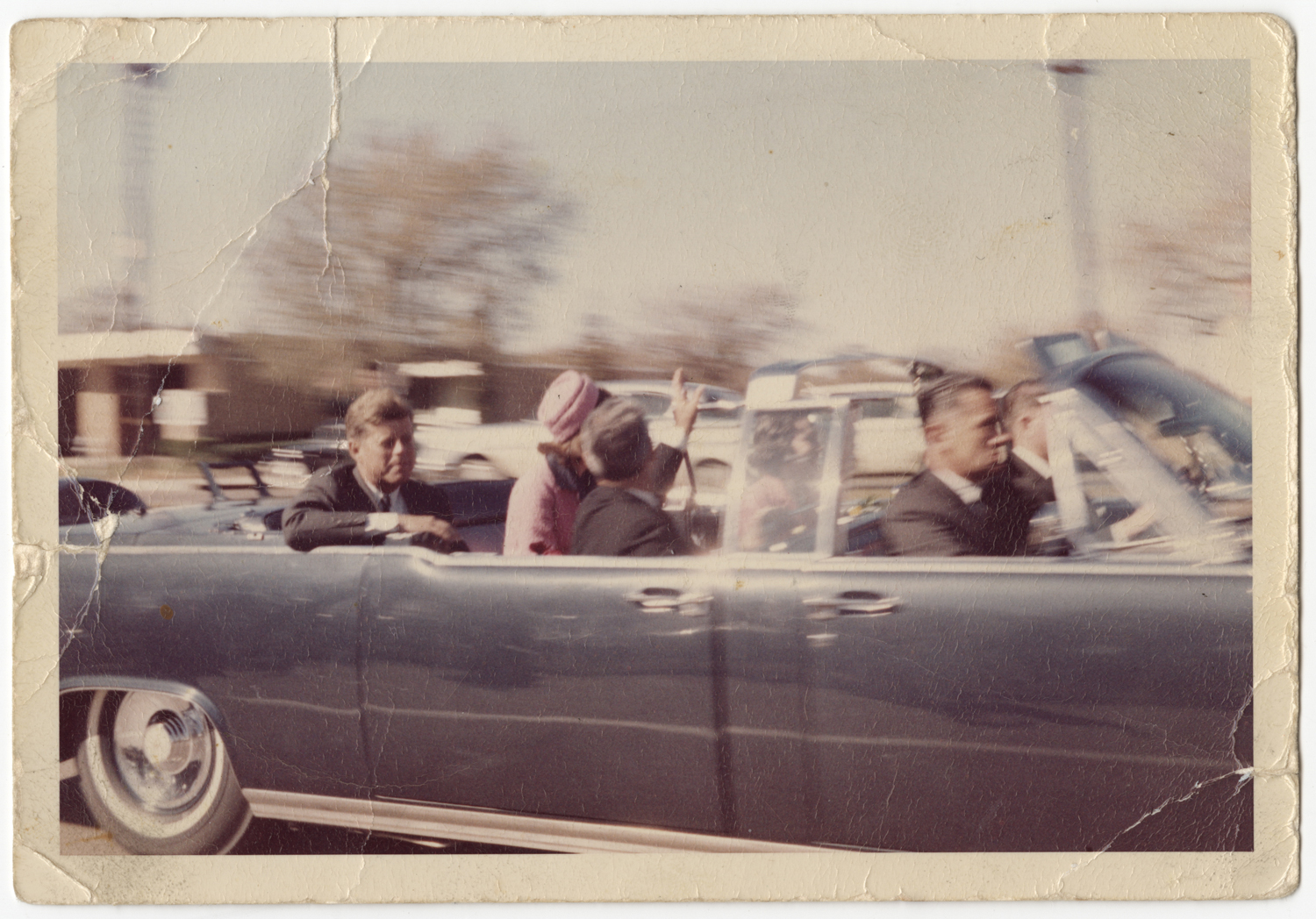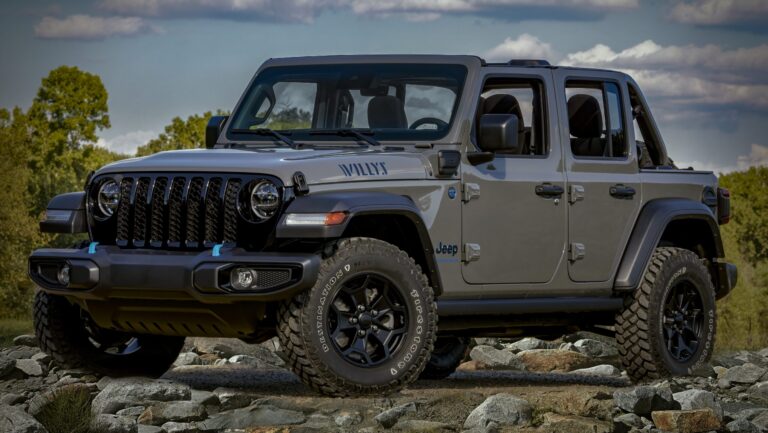1963 Jeep Gladiator For Sale: A Comprehensive Buyer’s Guide
1963 Jeep Gladiator For Sale: A Comprehensive Buyer’s Guide jeeps.truckstrend.com
In the vast landscape of classic American trucks, few vehicles possess the unique blend of rugged utility, historical significance, and growing collector appeal quite like the 1963 Jeep Gladiator. More than just a pickup, the Gladiator, officially known as the J-series, marked a pivotal moment for Jeep, introducing a modern, full-size truck designed to conquer both the job site and the open road. Finding a 1963 Jeep Gladiator for sale today isn’t just about acquiring a vehicle; it’s about investing in a piece of automotive history, a testament to enduring design, and a gateway to a passionate community. This guide will delve into everything you need to know when considering this iconic truck, from its enduring charm to the practicalities of ownership.
The Enduring Appeal of the 1963 Jeep Gladiator
1963 Jeep Gladiator For Sale: A Comprehensive Buyer’s Guide
The 1963 Jeep Gladiator was a revolutionary vehicle for its time. Launched in 1962 as a 1963 model, it was the first full-size pickup truck ever offered by Willys Motors (later Kaiser Jeep, then AMC Jeep, and eventually Chrysler/FCA/Stellantis). Sharing its platform with the luxurious Wagoneer, the Gladiator boasted an independent front suspension (a rarity for trucks then, though quickly replaced by a solid axle for durability), modern styling by Brooks Stevens, and the innovative overhead-cam ‘Tornado’ inline-six engine.
What makes the 1963 model particularly special is its status as the inaugural year. It introduced the world to the Gladiator’s robust chassis, versatile bed options (Thriftside for traditional separate fenders, Townside for integrated slab sides), and its legendary 4×4 capability. For collectors, the ’63 represents the purest form of the original vision, a blend of utilitarianism and a forward-thinking design that set the stage for decades of Jeep truck production. Its chunky lines, distinctive grille, and undeniable presence make it a head-turner at any car show or on any backroad, cementing its status as a highly desirable classic.
What to Look For When Buying a 1963 Jeep Gladiator
Acquiring a vintage truck like the 1963 Gladiator requires a keen eye and a thorough understanding of its potential pitfalls and strong points. Here’s a breakdown of what to inspect:
Condition Categories:
- Project Vehicle: Often found in barns or fields, these require extensive restoration. Expect significant rust, non-running engines, and missing parts. Price will be lowest, but restoration costs can quickly skyrocket.
- Original/Survivor: A truck that has been well-maintained over the decades but not fully restored. It retains its original patina, interior, and powertrain. These are increasingly sought after for their authenticity. Expect wear and tear, but minimal structural rust.
- Restored: A vehicle that has undergone a complete restoration, bringing it back to (or exceeding) its original glory. Prices will be highest, reflecting the investment in labor and parts. Ensure documentation of the restoration.

Key Inspection Points:
- Rust: This is the primary enemy of vintage vehicles.

- Frame: Inspect the entire frame for cracks, bends, and heavy pitting, especially around suspension mounting points.
- Body Panels: Check rocker panels, cab corners, floorboards, bed floor, inner fenders, and door bottoms. The Thriftside beds (with separate fenders) can trap moisture.
- Underbody: Look for rust around fuel lines, brake lines, and exhaust hangers.
- Engine (The Tornado OHC I6): The original 230 cu in ‘Tornado’ overhead-cam six-cylinder engine was unique but had some specific quirks.
- Listen for unusual noises, check for oil leaks (especially from the valve cover and timing cover), and observe exhaust smoke.
- Ensure proper oil pressure and cooling. Many Gladiators have undergone engine swaps (often AMC V8s or later inline-sixes), which can be a pro or con depending on your preference for originality vs. modern reliability.
- Transmission & Drivetrain:
- Transmission: Manual transmissions (often 3-speed or 4-speed) are common. Check for smooth shifting and listen for grinding. Automatic transmissions were less common in ’63 but did exist.
- Transfer Case & Axles: If it’s a 4×4, engage 4WD and test it. Check for fluid leaks from the transfer case, differentials, and axle seals.
- Brakes & Steering:
- Brakes were drum all around. Check for sponginess, pulling, or grinding. Inspect lines and master cylinder.
- Steering should be relatively tight for a vintage truck, without excessive play. Check tie rods and steering box.
- Electrical System: Test all lights, gauges, wipers, and the heater. Original wiring can be brittle and prone to shorts.
- Interior: Assess the condition of the seat upholstery, dash pad, headliner, door panels, and gauges. Originality often adds value.
- Documentation: A clear title is paramount. Service records, original owner’s manuals, and build sheets (if available) add significant value and provide insight into the truck’s history.
Understanding Valuation and Pricing
The price of a 1963 Jeep Gladiator can vary wildly based on its condition, originality, mechanical soundness, and rarity of specific configurations (e.g., long bed, Thriftside vs. Townside).
- Factors Influencing Price:
- Condition: As outlined above, this is the biggest determinant. A concourse-level restoration will command a premium.
- Originality: Trucks retaining their original engine, transmission, and interior components often fetch higher prices, especially if well-preserved.
- Mechanical Soundness: A running, driving, and roadworthy truck is worth more than a project.
- Configuration: Rare options or desirable bed types can influence value.
- Location: Prices can vary regionally.
- Market Demand: The classic truck market has been strong, and vintage Jeeps are increasingly popular.
It’s advisable to consult classic vehicle valuation guides (like Hagerty or NADA Classic Car Values) and compare prices of recently sold Gladiators on auction sites. A professional appraisal can also provide an accurate valuation.
Where to Find a 1963 Jeep Gladiator For Sale
Finding the right Gladiator requires persistence and knowing where to look:
- Online Marketplaces: Websites like Bring a Trailer, Hemmings, eBay Motors, Craigslist, and Facebook Marketplace are common hunting grounds. Specialized classic truck and Jeep forums also have "for sale" sections.
- Classic Car Dealerships: Some dealerships specialize in vintage vehicles and might have a Gladiator in stock, often at a higher price due to reconditioning and markup.
- Auctions: Classic car auctions can be a good source, but research the vehicle thoroughly beforehand and set a firm bidding limit.
- Word of Mouth & Local Classifieds: Don’t underestimate the power of networking within the classic car community or checking local papers and bulletin boards.
- Specialized Clubs: Joining Jeep J-series or Gladiator owner clubs can connect you with enthusiasts who might know of trucks for sale or are considering selling theirs.
The Ownership Experience: Challenges and Rewards
Owning a 1963 Jeep Gladiator is a unique adventure, presenting both its share of challenges and immense rewards.
Challenges:
- Parts Availability: While many mechanical components (especially if swapped to AMC power) are relatively easy to find, specific 1963-only or J-series-specific body and trim parts can be scarce and expensive. Reproduction parts are becoming more available, but patience is key.
- Mechanic Expertise: Not every mechanic is familiar with vintage vehicles, particularly the Tornado engine or older 4×4 systems. Finding a specialist is crucial.
- Modern Comforts & Safety: Expect manual steering, drum brakes, no airbags, and basic ventilation. It’s a raw driving experience far removed from modern trucks.
- Fuel Economy: The original engines weren’t known for efficiency, and parts like carburetors might need tuning.
Rewards:
- Unique Driving Experience: There’s nothing quite like piloting a vintage Gladiator. The feel of the road, the sound of the engine, and the simple, mechanical nature of the drive are incredibly engaging.
- Head-Turner Status: Gladiators attract attention wherever they go. Be prepared for conversations, compliments, and questions.
- Community: The Jeep J-series community is passionate and helpful, offering advice, parts leads, and camaraderie.
- Potential Appreciation: Well-maintained and restored classic trucks, especially unique ones like the Gladiator, have shown strong appreciation in value.
- A Piece of History: Owning a Gladiator is owning a tangible link to Jeep’s heritage and a significant era in American automotive design.
Tips for a Successful Purchase
- Set a Realistic Budget: Factor in not just the purchase price, but also potential transportation, immediate repairs, registration, insurance, and future restoration costs.
- Do Your Homework: Research common issues, original specifications, and market values thoroughly.
- Get a Pre-Purchase Inspection (PPI): If possible, have a qualified mechanic specializing in vintage vehicles inspect the truck, especially if you’re buying sight unseen or from a distance.
- Ask for Extensive Photos/Videos: Request detailed photos of all angles, underbody, engine bay, interior, and any problem areas.
- Test Drive Thoroughly: If possible, drive the truck on various road types to assess its performance, braking, and steering. Listen for unusual noises.
- Verify Documentation: Ensure the seller has a clear, transferable title in their name.
- Negotiate Wisely: Be prepared to negotiate, especially if you find issues during your inspection.
1963 Jeep Gladiator Estimated Price Guide
The following table provides a general estimate for a 1963 Jeep Gladiator for sale, based on condition. Prices can fluctuate significantly based on market demand, location, and specific features (e.g., engine swaps, rare options).
| Condition Category | Estimated Price Range (USD) | Key Characteristics & Considerations |
|---|---|---|
| Project Vehicle | $5,000 – $15,000 | Non-running, significant rust, missing parts, major mechanical overhaul needed. Ideal for experienced restorers. |
| Good Original / Survivor | $15,000 – $30,000 | Running and driving, moderate patina, minor rust, mostly original components. May need mechanical refresh. |
| Driver Quality | $25,000 – $40,000 | Solid mechanicals, decent paint and interior (may not be original), minimal rust. Ready to enjoy immediately with minor work. |
| Restored / Excellent | $40,000 – $65,000+ | Professional restoration, excellent paint, new interior, rebuilt engine/drivetrain. Close to show quality. |
| Concourse / Show Quality | $65,000 – $90,000+ | Meticulously restored to original factory specifications or better. Flawless condition, typically award-winning. |
Note: These are estimates. Always conduct your own research and consider a professional appraisal.
Frequently Asked Questions (FAQ)
Q: What engine did the 1963 Jeep Gladiator originally come with?
A: The 1963 Gladiator was primarily offered with the 230 cubic inch (3.8L) ‘Tornado’ overhead-cam (OHC) inline-six engine. Some models might have had other options or later engine swaps.
Q: Are parts for the 1963 Gladiator hard to find?
A: Some mechanical parts, especially for the Tornado engine, can be challenging but not impossible to source. Many wear items are shared with other period AMC/Jeep vehicles. Body and trim-specific parts for the ’63 can be rare, but a growing aftermarket and community support network helps.
Q: Can a 1963 Jeep Gladiator be a daily driver?
A: While mechanically robust, a 1963 Gladiator lacks modern safety features, comfort, and fuel efficiency. It can be a daily driver if properly maintained and you’re comfortable with its vintage characteristics, but it’s more suited for weekend cruises or light utility work.
Q: What’s the difference between a "Thriftside" and "Townside" bed?
A: The "Thriftside" bed is a traditional separate-fender style, similar to most pickups of the era, emphasizing utility. The "Townside" bed features smooth, integrated slab sides, offering a more modern, car-like appearance.
Q: Is a 1963 Jeep Gladiator a good investment?
A: While no classic car purchase guarantees financial returns, well-preserved and restored 1963 Jeep Gladiators have shown appreciation in value over time, especially as interest in classic trucks grows. Its historical significance and unique design make it a desirable collector’s item.
Conclusion
The 1963 Jeep Gladiator is more than just a vintage truck; it’s a statement. It represents a bygone era of American automotive innovation, a commitment to rugged capability, and a design that stands the test of time. For those seeking a unique classic that offers both character and a connection to a rich heritage, a 1963 Jeep Gladiator for sale presents an exciting opportunity. While ownership comes with its share of responsibilities in maintenance and care, the rewards of piloting such an iconic machine, the camaraderie of the Jeep community, and the sheer joy of preserving a piece of history make it an immensely fulfilling endeavor. Approach your search with patience, knowledge, and passion, and you might just find your perfect piece of Gladiator glory.






